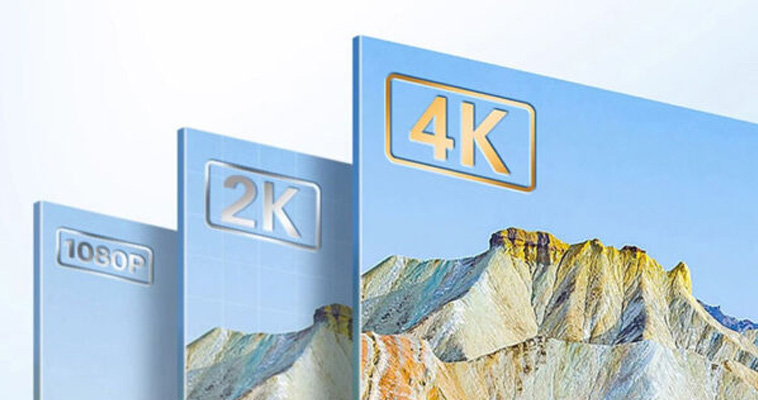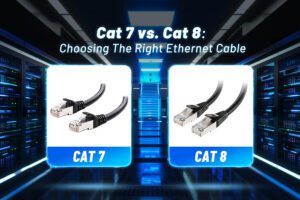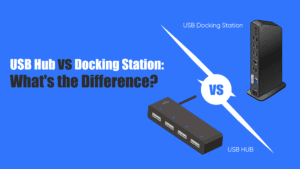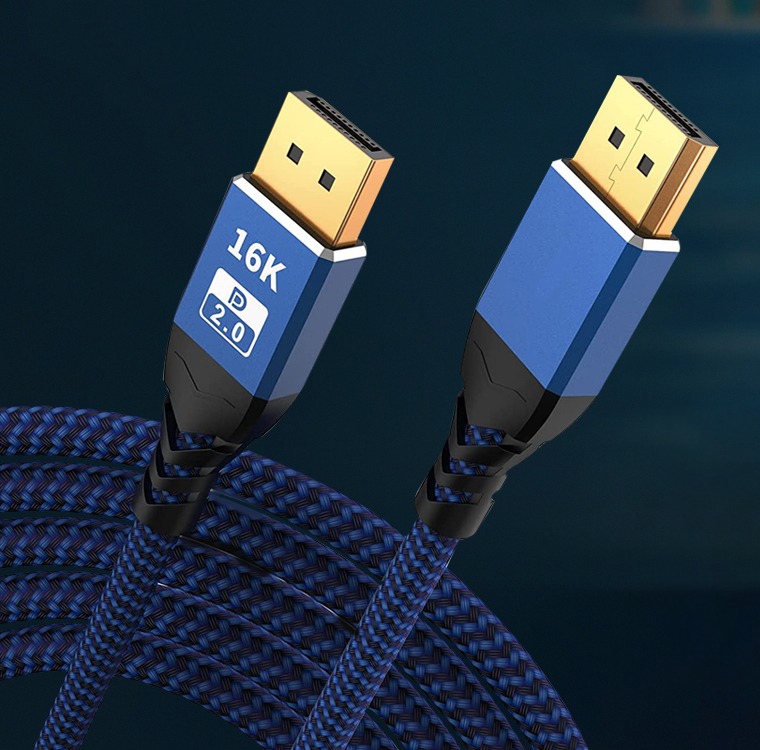In today’s digital age, HDMI cables, as the key to connecting multimedia devices, are widely used in various scenarios. For many people, understanding the different types and functions of HDMI cables may still be confusing. Explore the three types of HDMI cables to help you choose the best one for your needs. For details, please refer to the following article.
Introduction
What is an HDMI Cable?
HDMI cable (High-Definition Multimedia Interface) is a digital cable used to transmit high-quality audio and video signals between devices. Combining audio and video into a single cable simplifies connections for devices like TVs, Blu-ray players, game consoles, and computers. HDMI cables support various resolutions, including 4K and 8K, and are designed to deliver uncompressed digital audio alongside high-definition video. They are the standard for modern home entertainment systems due to their ease of use and superior performance.
Importance of HDMI Cables
HDMI cable is a connection line used to transmit high-definition digital audio and video signals. It plays a vital role in modern home entertainment systems. HDMI cables transmit high-definition picture quality and high-quality audio for a clearer and more realistic audio and video experience. HDMI cable connects devices for high-quality audio and video entertainment.
Standard HDMI cable
The standard HDMI cable is a digital interface cable used to transmit high-definition video and audio signals. It is a set of connection standards developed by the HDMI (High Definition Multimedia Interface) organization for connecting high-definition TVs, high-definition projectors, computer monitors and other devices.
The main features of the standard HDMI cable include:
- High-definition transmission: supports high-definition video and audio signals, and can transmit 1080p full HD signals.
- Digital transmission: using digital transmission technology, it can avoid signal interference and distortion, and ensure transmission quality.
- Multi-function transmission: in addition to transmitting video and audio signals, it can also transmit network data and control signals to achieve multiple functions.
- High-speed transmission: supports high-speed transmission, can transmit high-quality audio and video signals, and improve user experience.
- Strong compatibility: supports multiple resolutions and audio formats, and can be compatible with various devices.
Usage scenarios
The standard HDMI cable is suitable for connecting high-definition video and multi-channel audio devices, such as HDTVs, projectors, Blu-ray players, game consoles, computers, etc. It can transmit high-definition video and audio signals and supports 1080p resolution and higher. Therefore, the standard HDMI cable is often used in home theater systems, computer monitors, conference room projectors and other occasions that require high-quality audio-visual effects.
Pros and Cons
Advantages:
- Provide high-definition video transmission: Standard HDMI cables can support high-definition video transmission, allowing users to enjoy clearer images and video experience.
- Lightweight and easy to carry: Standard HDMI cables are generally thin, soft and easy to carry, and can be easily carried with you or put in a bag.
- Versatility: Standard HDMI cables can transmit audio and video signals, and can also support network connection and control functions.
- Good compatibility: Standard HDMI cables are widely used in various devices, including TVs, projectors, computers, game consoles, etc., with good compatibility.
Disadvantages:
- Limited distance: The transmission distance of standard HDMI cables is generally short, usually not more than 15 meters, and the signal quality may decrease beyond this distance.
- Affected by environmental interference: Standard HDMI cables may be affected by external environmental electromagnetic interference during transmission, resulting in signal quality degradation or interference.
- Expensive: Compared with other transmission cables, standard HDMI cables may be more expensive, and it takes some trouble to choose HDMI cables that suit your needs.
- Requires corresponding device support: Using a standard HDMI cable to transmit high-definition signals requires the device to support the HDMI interface and high-definition display, otherwise its advantages cannot be fully utilized.
High Speed HDMI Cable
High-speed HDMI cable is a digital connection line used to transmit high-definition audio and video signals. It can connect TVs, projectors, game consoles, audio equipment and other devices.
It has the following features:
- High-definition transmission: High-speed HDMI cable supports high-definition video transmission and can achieve image quality output of 1080p and above resolution, allowing you to enjoy a clearer and more realistic audio and video experience.
- High-speed data transmission: High-speed HDMI cable uses high-quality wires and transmission technology to achieve high-speed data transmission and ensure the stability and reliability of signal transmission.
- Versatility: In addition to transmitting video signals, high-speed HDMI cable can also transmit audio signals and network signals, realizing multiple functions on one connection line.
- Durability: High-speed HDMI cable is made of wear-resistant and pull-resistant materials, which can withstand long-term use and frequent plugging and unplugging without being easily damaged.
Usage scenarios
- HD video playback: High-speed HDMI cables can transmit HD video signals, including video content with HD resolutions such as 1080p and 4K, and are suitable for connecting devices such as TVs and projectors.
- Game console connection: Game consoles such as PS4 and Xbox usually require high-speed HDMI cables to connect to monitors or TVs to obtain smooth game pictures and sound effects.
- Computer connection to external monitor: In a dual-screen or multi-screen display environment, high-speed HDMI cables can connect computers and external monitors, projectors and other devices to expand the screen display space.
- Home theater system connection: High-speed HDMI cables are also suitable for connecting various audio and video devices in home theater systems, such as amplifiers, speakers, Blu-ray players, etc.
- Camcorder, camcorder connection: Connect camcorders, camcorders and other devices to TVs or computers for viewing, editing and sharing captured videos and photos.
Pros and Cons
Advantages:
- High-speed transmission: High-speed HDMI cables support high-definition video and audio signals for the best AV experience.
- High-definition picture quality: High-speed HDMI cables deliver high-definition picture and lossless sound quality for a more immersive viewing experience.
- Durability: High-speed HDMI cables are durable and have good anti-interference performance, ensuring stable signal transmission over time.
Disadvantages:
- Higher price: High-speed HDMI cables have higher manufacturing costs, so the price is usually more expensive than ordinary HDMI cables.
- Susceptible to external interference: High-speed HDMI cables are faster but may experience more interference.
- Poor compatibility: Older devices may need adapters or converters to work with high-speed HDMI cables.
High-Speed Ethernet HDMI Cable
High-speed Ethernet HDMI cable is a data transmission cable used to connect high-definition video and audio devices. It can transmit high-definition video signals, audio signals and network data, and supports full HD (1080P) and 4K resolution.
Features of High-speed Ethernet HDMI cable include:
- High-definition transmission: supports up to 4K resolution, and can achieve clear video and audio transmission effects.
- Network data transmission: supports Ethernet connection and simultaneous transmission of network data, video, and audio.
- High-speed transmission: has high-speed transmission speed, and can quickly transmit large-capacity data.
- Strong compatibility: It can be compatible with various high-definition video devices such as TVs, projectors, computers, game consoles, etc.
- High-quality materials: Made of high-quality materials, it has durability and stability.
- Easy installation: easy to connect, easy to plug and unplug, and simple to use.
- Versatility: It can also transmit network data to improve connection efficiency between devices.
Usage scenarios
- Home entertainment system: Connect all equipment for HD video and audio transmission.
- Meeting room and demonstration venue: Connect laptop or other equipment to display presentations, videos and content on a large screen or projector.
- Computer workstation and display: connect a computer to a display or TV for HD video and audio.
- Game equipment: Connect your game console, computer, or laptop to your TV or display for an enhanced gaming experience with high-definition graphics and sound.
- Multimedia production and programming: connect video monitors, recorders, cameras and other equipment to perform video editing, editing and programming.
- Other multimedia applications: Connect multimedia devices for high-definition video and audio transmission.
Pros and Cons
Advantages:
- High-speed transmission speed: High-speed Ethernet HDMI cables offer up to 18Gbps, ensuring smooth HD video and audio transmission.
- Network connection function: This cable also has Ethernet functionality, enabling network connections between devices like TVs and projectors for more online features.
- High-definition picture quality: High-speed Ethernet HDMI cables support 4K resolution and can provide clear and realistic picture quality experience.
- Versatility: This type of cable can transmit video, audio and network signals to meet the connection needs of multiple devices.
Disadvantages:
- Higher cost: High-speed Ethernet HDMI cables are more expensive than regular ones, increasing connection costs.
- Limited long-distance transmission: High-speed Ethernet HDMI cables may experience signal attenuation over long distances, affecting transmission quality.
- Device compatibility: Some devices may not support high-speed Ethernet HDMI cables. Ensure the device is fully compatible with the cable before connecting and using it.
FAQ
1.What is HDMI 2.1?
HDMI 2.1 is the latest HDMI version, offering higher resolutions, refresh rates, and bandwidth than previous versions.It also features VRR, QFT, and ALLM for improved gaming and viewing.
2.Is there a limit to how long an HDMI cable can be?
Yes, the maximum recommended length for an HDMI cable is about 50 feet (15 meters). Beyond this length, signal quality may degrade and you may experience issues with audio and video transmission.







